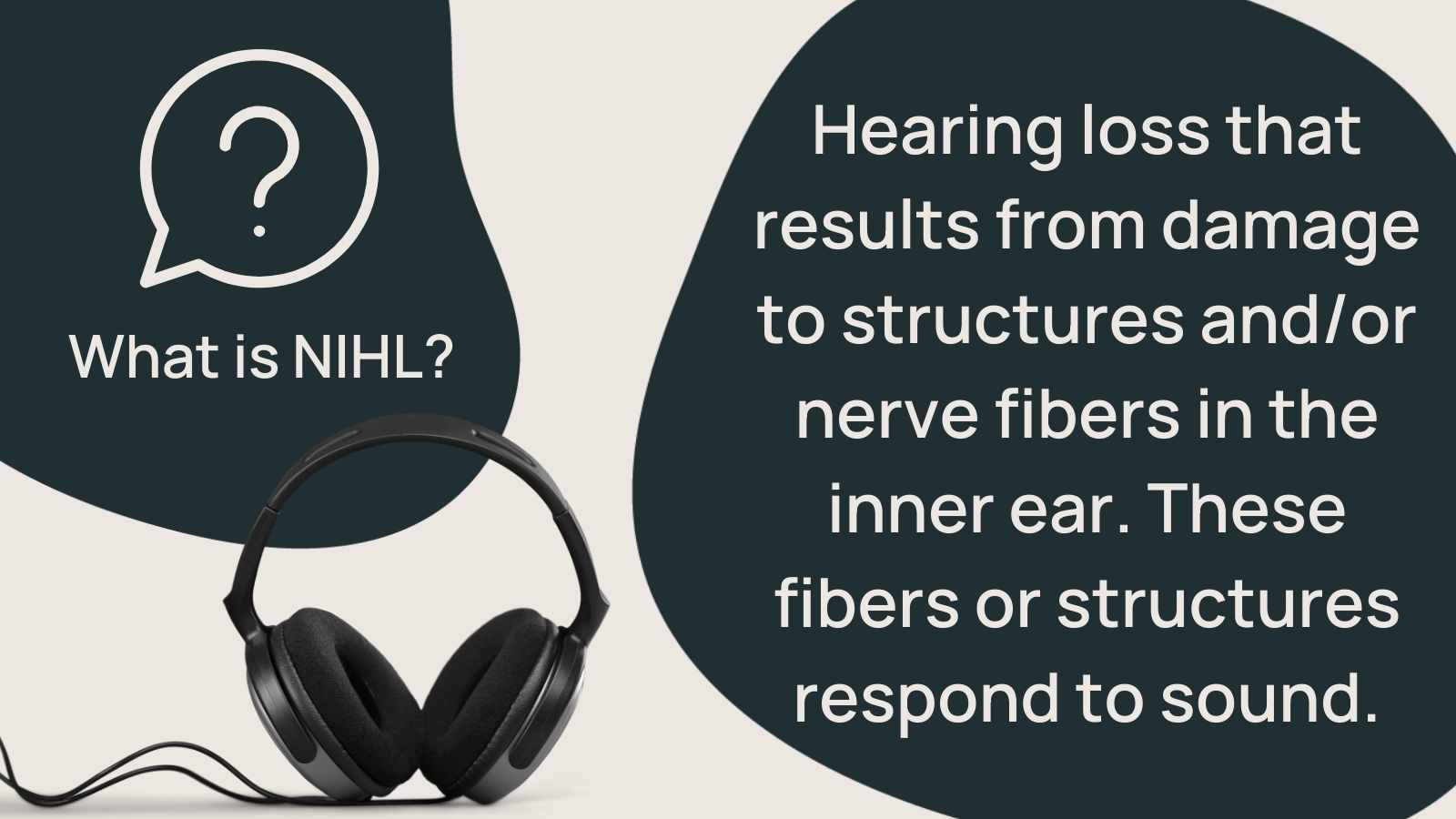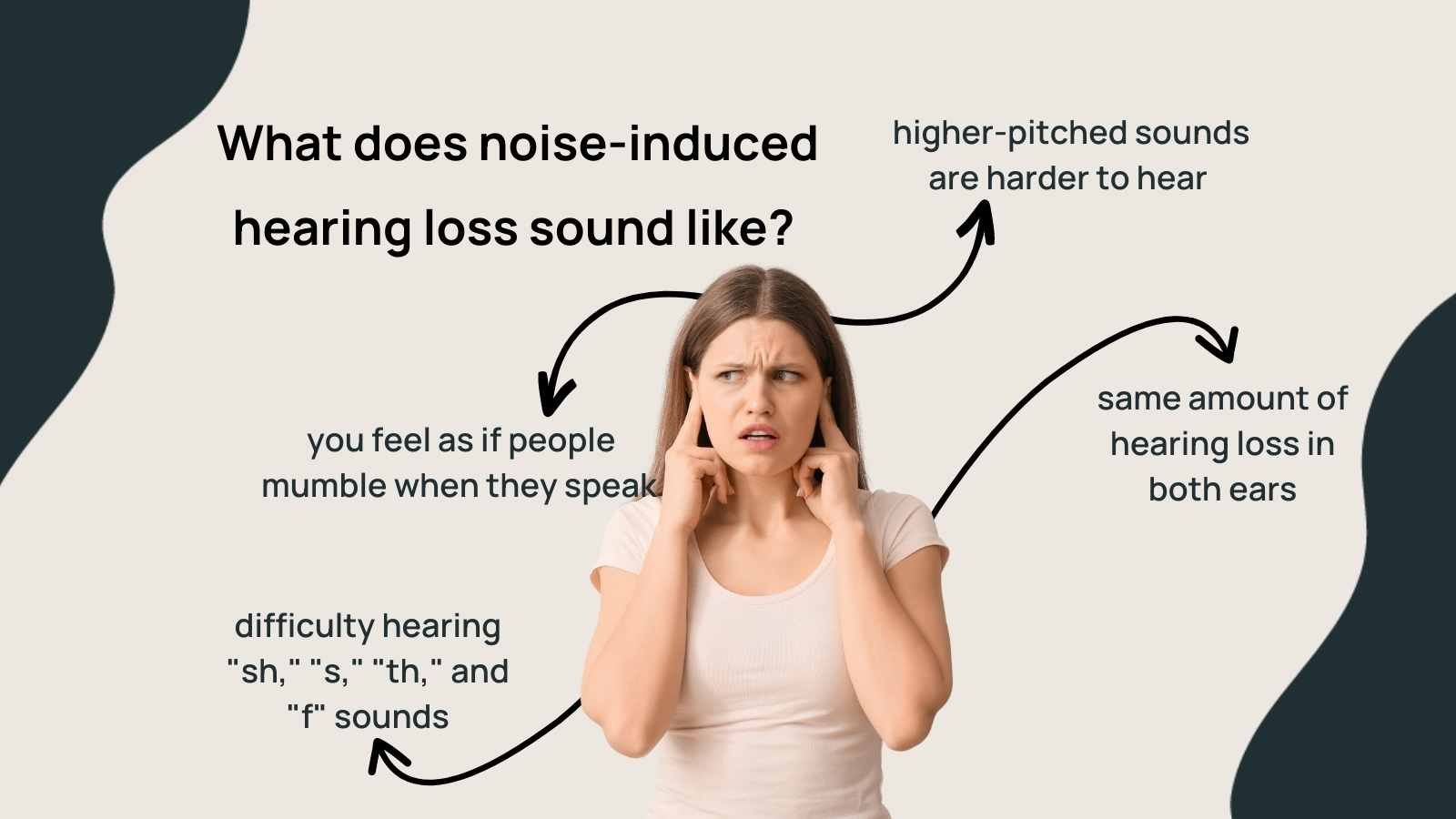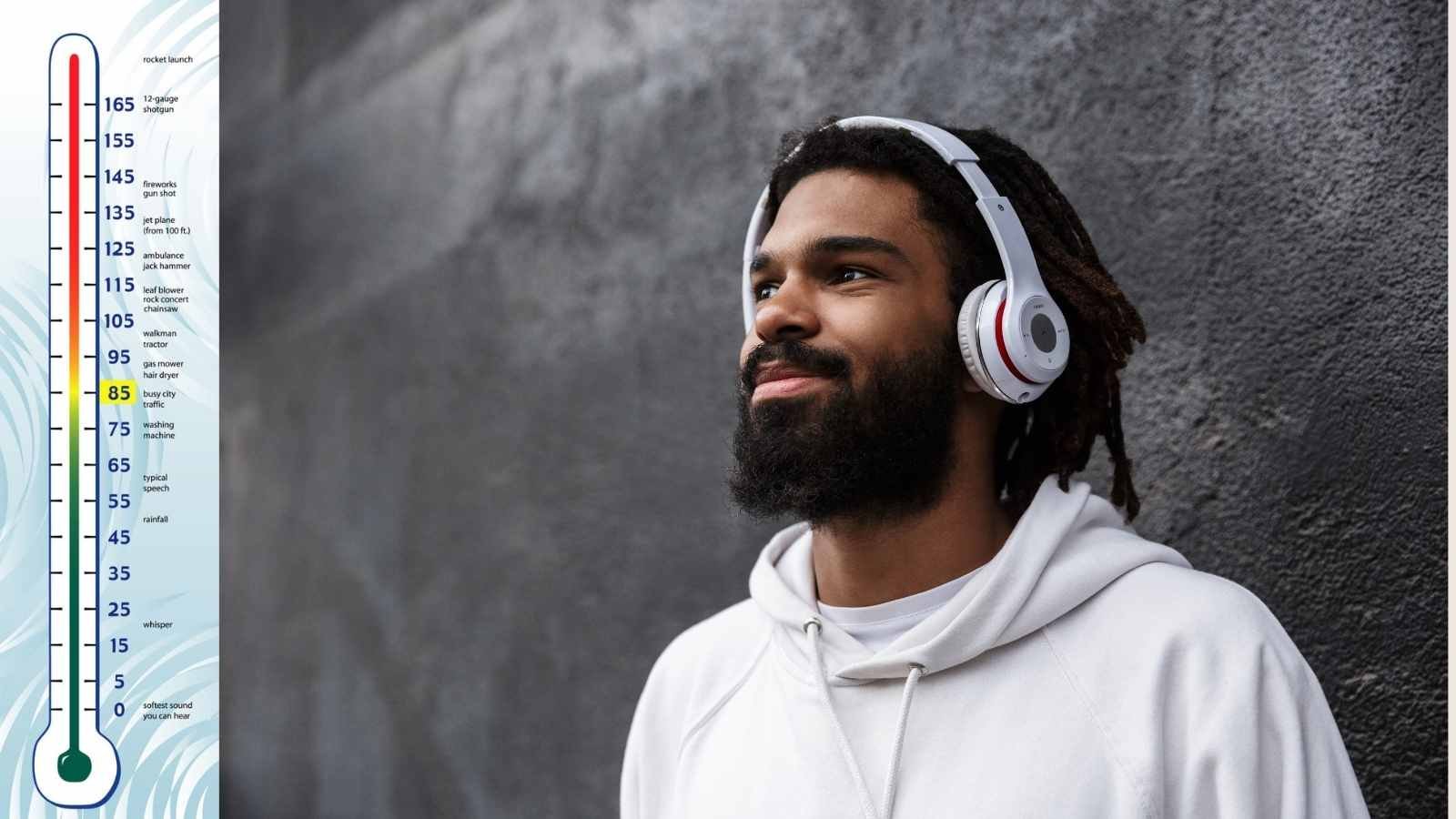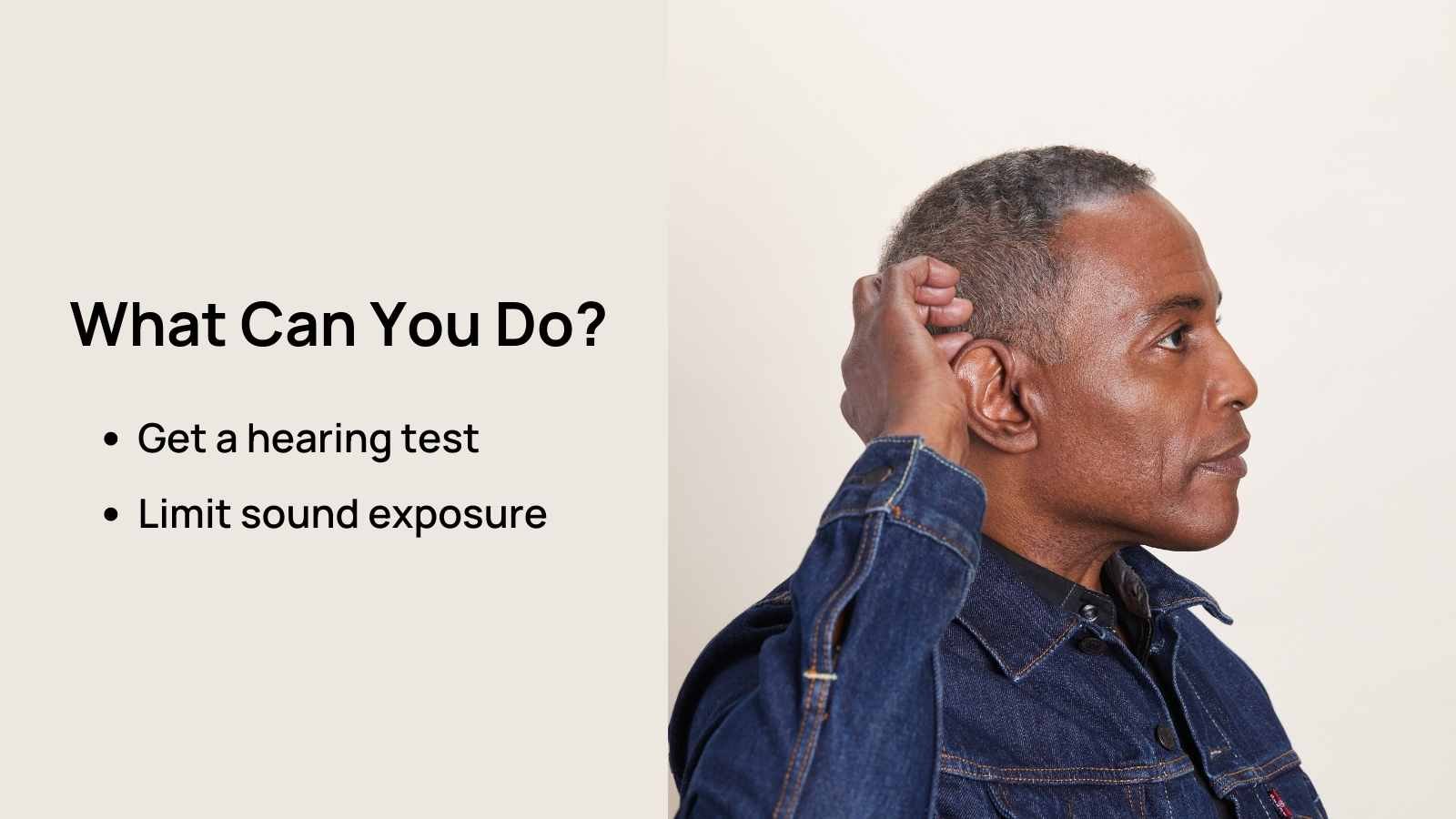Key Takeaways:
- Noise causes damage to the inner ear due to excessive exposure levels, prolonged exposure, or a combination of both.
- Noise-induced hearing loss is largely preventable with hearing protection and being mindful of headphone volume listening levels, for example.
- Anyone with regular noise exposure should monitor their hearing annually, or sooner if concerns arise.

It’s just a fact: The world is a noisy place. From the music and nature to electronics and machinery (like cars and buses), there’s a lot of sound permeating daily life, and yet many people don’t think twice about the volume level.
But noise-induced hearing loss is a possibility that can come from exposure to loud sounds.
Keep scrolling to get deeper insights on noise-induced hearing loss—aka, NIHL—and what causes the condition, plus how to prevent and treat it.
What is NIHL?

NIHL develops when damage occurs to the delicate hair cells in the inner ear due to exposure to loud sounds or noises. This could be from continuously listening to music through headphones, working in an environment with frequent loud noises (like construction sites), or going hunting without proper hearing protection.
Even one exposure to a gunshot at close range without hearing protection can cause immediate and permanent hearing loss. In addition, noise exposure that causes damage to the inner ear can cause permanent or temporary hearing loss or ringing in the ears (also known as tinnitus). Noise damage shows up on an audiogram (hearing test) as a high frequency hearing loss.
The video below offers a fascinating simulation of noise induced hearing loss compared to standard hearing loss that comes with age.
Who is affected by NIHL?

People sometimes assume that hearing loss happens only to adults. However, prolonged sound exposure can damage hearing at any age. Adults, as well as children, experience hearing loss if the sound intensity is loud enough.
According to the NIH, data from 2005-2006 estimated that 17% of teenagers had noise-induced hearing loss. Since that time, this number has likely increased due to widespread headphone use.
Why are young people affected? One significant contributing factor is headphone usage (and the volume). That being said, if you turn the volume up on the headphones to the maximum, this level often exceeds a safe listening level. In addition, noisy places can cause us to turn the volume up high to be heard over the background noise.
To keep the volume at a safe level, limit the volume to 60-70% of the maximum volume. A good rule of thumb is that you should still be able to hear a person talking at an arm’s length from you.
The video below offers a fascinating simulation of noise induced hearing loss compared to standard hearing loss that comes with age.
What does NIHL sound like?

The symptoms of NIHL usually often start slowly, then worsen over time with continued noise exposure. The most common symptoms are difficulty understanding speech in a noisy environment like restaurants or parties—because you cannot distinguish between the background noise and parts of words. Other symptoms include muffled hearing, ringing in the ears, and sensitivity to loud sounds.
After loud sound exposure, you may experience a temporary worsening in hearing. This is known as a temporary threshold shift. In some cases, the ear can recover, and hearing may be partially or fully restored within several hours to several days after noise exposure.
However, in these cases, patients report that it feels like they have "cotton in their ears," or intense ringing in the ears.
For those with a more extensive noise history, speech clarity can be more noticeably impaired. Unfortunately, increasing the volume for this type of hearing loss does not always resolve the muffled quality of speech.
What can cause NIHL?

The most common culprits of NIHL are anything that produces loud noise at a high decibel level for an extended period. As mentioned, this includes concerts, construction work, and loud machinery in factories.
In addition, we often need to remember about other sources of sound, such as leaf blowers, air conditioning units, and even a hairdryer when close to the ear, which also produces high decibel levels over long periods if not appropriately monitored. Other sound exposure from airplane noise.
How to Prevent NIHL

The best way to prevent noise-induced hearing loss? Be conscious of how loud the sounds around you are at any given moment, especially if they are constant over a long period.
Take stock of your daily noise dose just like your daily sodium intake. If you exceed a certain amount, it isn’t good for your health. So what is a safe listening level? The answer depends a bit on who you ask. NIOSH requires employees to limit exposure and use hearing protection in environments of 85 dBA or higher, due to the risk of hearing damage from hazardous noise levels.
However, studies suggest that sound exposure at or below 80 dBA is a safer volume level to prevent noise damage.
Are you wondering how loud that is? Here are some examples:
.jpeg)
Helpful Tips
Do you like to turn the volume up when listening to music on headphones? (Many of us do.) A good rule of thumb is if you can’t hear someone standing right next to you over the volume of the music, then it is too loud.
There are also apps available on mobile devices now which measure decibel levels, so you know exactly how much noise you're exposed to in loud settings; these can help prevent damage before it's too late. The NIOSH SLM is a great option and free to download.
What should you do if you are in a loud environment or exposed to loud sounds? Three strategies can help:
1. Use hearing protection (e.g., earplugs)
2. Turn down the volume (if you can)
3. Limit the amount of time in that environment
What to Do If You Have NIHL

If you've experienced any symptoms associated with NIHL, then it's essential that you do two things:
Have a hearing test, and limit your loud sound exposure.
A hearing test will show whether you have hearing loss, for example, from noise damage, and it can serve as a baseline for the future. This test also demonstrates speech clarity, which can be negatively affected for those with NIHL.

After establishing a baseline, develop good habits to protect your hearing. For example, you’ll want to limit your loud sound exposure to prevent further damage and use hearing protection if you have loud sound exposure.
Conclusion
Noise-induced hearing loss (NiHL) is caused by prolonged exposure to loud sounds. It’s essential for everyone—regardless of age, lifestyle, or background—to stay conscious of how much noise they're exposed to everyday.
By limiting loud sound exposure using simple methods like using ear protection, prevention will go a long way toward stopping further harm from being done to our ears. Additionally, it’s essential to have your hearing checked by a professional if you experience any NIHL symptoms and take steps to protect your hearing from further damage.






